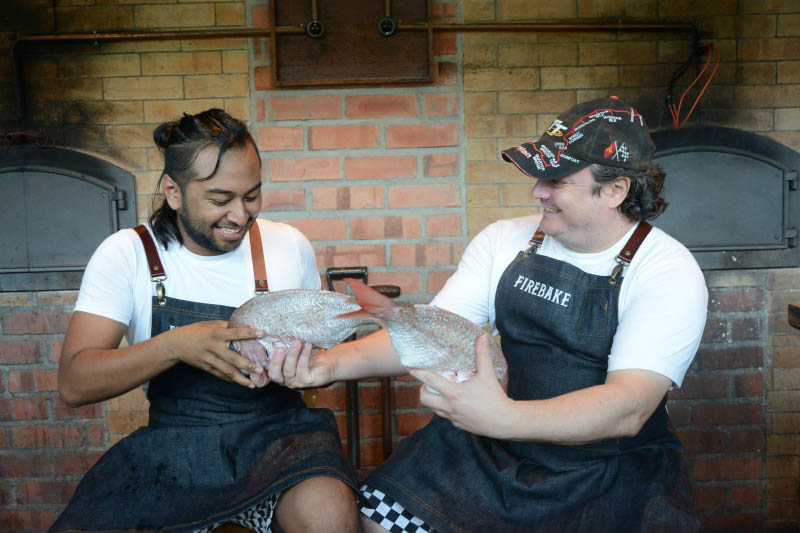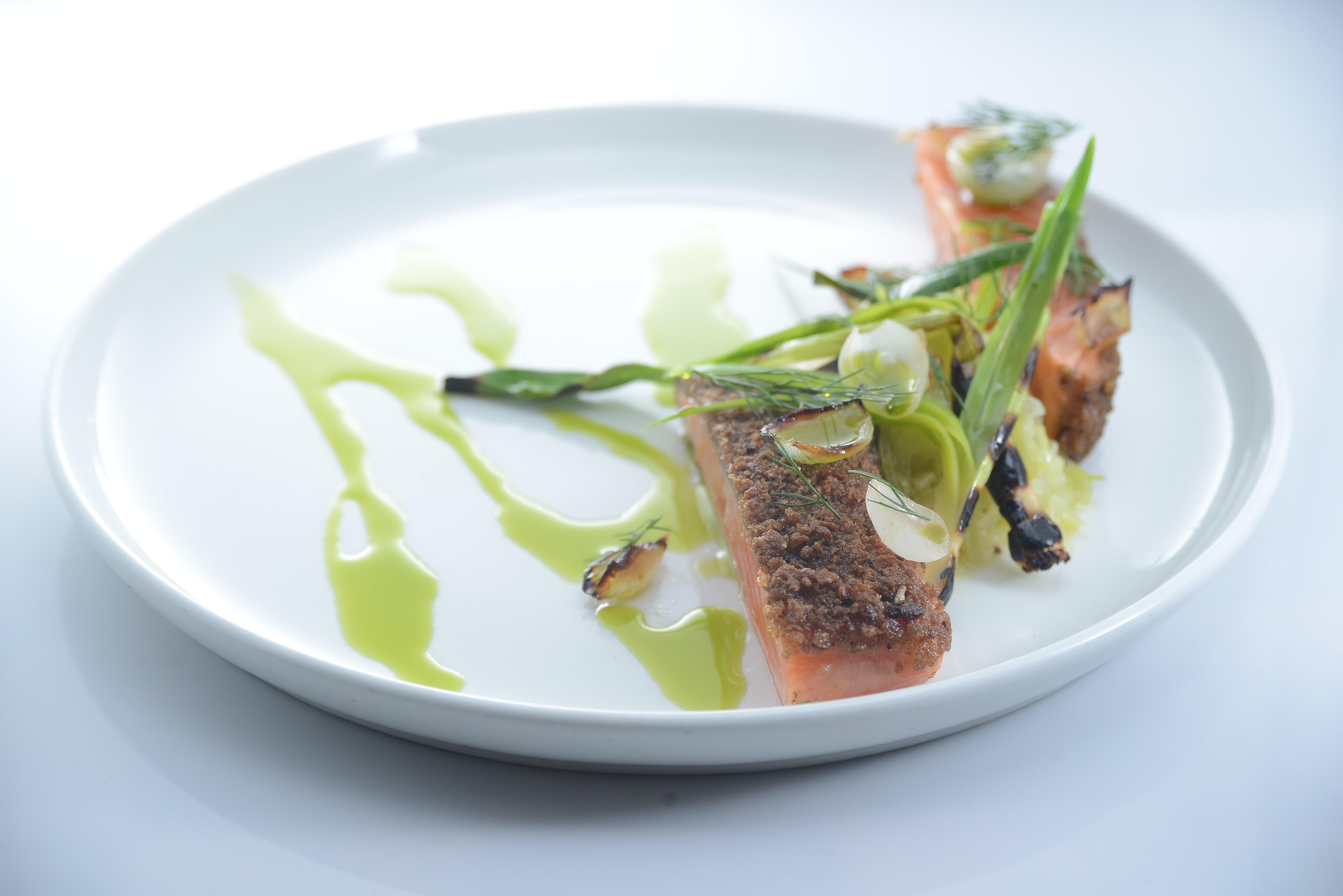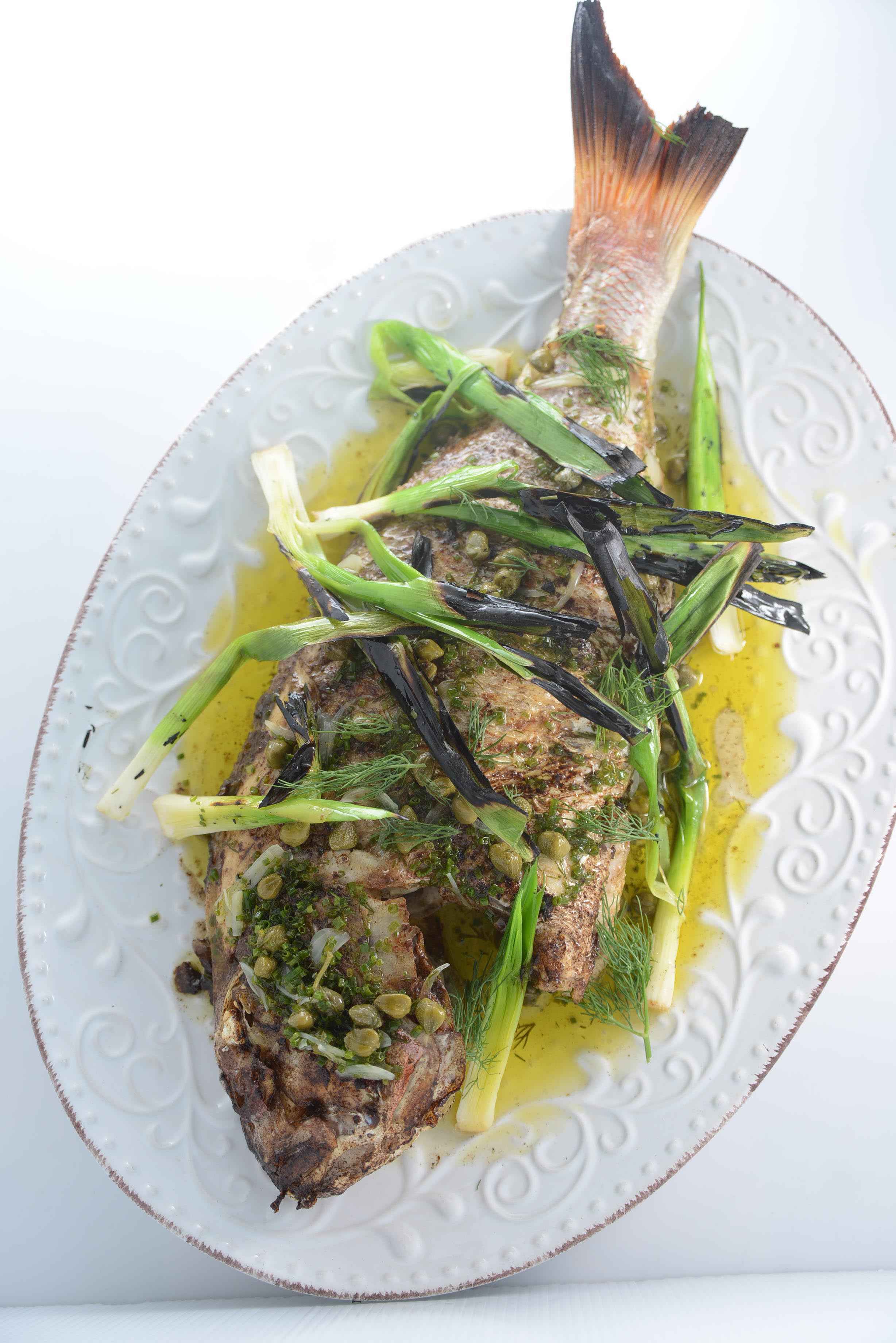Sustainable Seafood With Founder Konstantino Blokbergen of Firebake
by Darinee Durai
@ 29 Nov 2017

In the light of recent years, awareness of the effects of pesticides sprayed on vegetables on the human body has made an expensive label of the term ‘organic’. The same is probably thought of the term ‘sustainable’ when applied on seafood. While that might be necessarily true depending on the area you live in, isn’t a higher price tag worth the cost of reducing the negative impact left on our oceans? Do farmed or wild caught fish really taste significantly different? Why are some chefs using sustainable seafood and some not? Is it a conscious decision or can we chalk it up to a lack of awareness or is it a matter of customer preference? Which species are on the verge of extinction and what are the harmful fishing methods that disrupt the seabed? Let's hear from Konstantino Blokbergen!

Image: Chef de Cuisine Fariz and Founder Konstantino Blokbergen
DD:What are your considerations when purchasing seafood?
KB: First of all, it comes down to seafood freshness and quality; this is still what consumers are expecting in their plate. Secondly, we want to validate provenance and make sure that we buy seafood from safe source. Thirdly, it comes down to whether the cost of seafood is still within the guidelines of our menu costing. When the above main criteria are met, we can look at other socially responsible aspects such as sustainability in procurement or even seasonality.
DD:What is your understanding of sustainable seafood and its importance?
KB: If we all do not change our behavior in seafood consumption vey soon,global livestock will face shortage in supply. Chefs and leading restaurants around the world have the potential to start advocating such responsible movement in order to bring more awareness in product sustainability around the world.
DD: How would it affect your customer demographic if you used unsustainable or sustainable seafood?
KB: Similarly to the concept of wanting to improve island-wide waste management in Singapore with more eco-friendly solutions, sustainability in food consumption remains (at this stage) a topic with very little consumer concern in Singapore. Hence, we believe that using either unsustainable or sustainable seafood won’t make too much difference in consumer demographic in a restaurant in Singapore.However, we are opinion that a more informed consumer awareness could ultimately result in a difference in consumer behavior over time; an example would be on how they would change their way of ordering seafood dishes from a restaurant menu with a clear communication strategy in responsible product sourcing.

Image: Norwegian blue mussel, golden ale, chorizo and wave slice
DD: What is the availability of sustainable seafood in your location?
KB: Singapore market is rather small, so it is very feasible for food purveyors to be able to deliver any seafood produce island-wide for as long as advancednotice is given to them. So overall quite easy.
DD: What factors would make you consider integrating sustainable seafood into your menu?
KB: We already use sustainable seafood at our restaurant. Some are farmedsustainable and some are wild sustainable menu options. We have come to notice that our consumers are open to try both; it just comes down to how we want to communicate the details of each dish served and how we price them ultimately. In the end, consumers judge our dishes by their quality and their value.

Image: cured Norwegian salmon, rock crust, dill, leek pickled onion
DD: (If using sustainable seafood) What is main challenge in integrating sustainable seafood into your menu?
KB: We don't see any challenge with it. It comes down to the right chef execution and the right pricing. Just do it.
DD: How much do wild caught and farmed seafood differ in taste and texture?
Wild caught fish will always hold its texture and shape more than any other type of seafood; it just comes down to how much exercise each animal puts in every day! A good example is wild caught river fish versu fresh water farmed fishes; the first one will have a more lean meat with more concentrated flavor, while the second one will have a fattier and less flavorful meat. But in the end of the day, both can taste amazingly if prepared the right way. Like anything else, it all comes down to the right product knowledge of the chef and how he/she is able to adapt the right culinary skills for each different produce used in order to elevate the consumer experience.
DD: Would you say that the reason certain chefs don’t use sustainable seafood is because of the lack of awareness or is it a conscious decision brought upon by customer preference?
KB: Yes there is definitely still little awareness by majority of chefs in the industry:“why change something that sells well” most conventional chefs would think.Though chefs have the power to trigger a change in consumer behavior by initiating them to appreciate new food creations. It often just takes one chef to innovate to subsequently generate new consumer interest in a market like Singapore.

Image: Snapper with capers herb sauce
DD: Should chefs take a stand and educate their customers?
KB: Yes definitely. Chefs are the triggering link between consumers and practically everything else in the global food industry.
DD: If a customer requests to be served an endangered species, will you as a
chef still provide it?
KB: Hell no.
Check out their food over at:
https://www.instagram.com/firebakesg/
and head over to : Firebake - Woodfired Bakehouse & Restaurant 237 East Coast Road, Level 1, Singapore 428930 to eat!
 In the light of recent years, awareness of the effects of pesticides sprayed on vegetables on the human body has made an expensive label of the term ‘organic’. The same is probably thought of the term ‘sustainable’ when applied on seafood. While that might be necessarily true depending on the area you live in, isn’t a higher price tag worth the cost of reducing the negative impact left on our oceans? Do farmed or wild caught fish really taste significantly different? Why are some chefs using sustainable seafood and some not? Is it a conscious decision or can we chalk it up to a lack of awareness or is it a matter of customer preference? Which species are on the verge of extinction and what are the harmful fishing methods that disrupt the seabed? Let's hear from Konstantino Blokbergen!
In the light of recent years, awareness of the effects of pesticides sprayed on vegetables on the human body has made an expensive label of the term ‘organic’. The same is probably thought of the term ‘sustainable’ when applied on seafood. While that might be necessarily true depending on the area you live in, isn’t a higher price tag worth the cost of reducing the negative impact left on our oceans? Do farmed or wild caught fish really taste significantly different? Why are some chefs using sustainable seafood and some not? Is it a conscious decision or can we chalk it up to a lack of awareness or is it a matter of customer preference? Which species are on the verge of extinction and what are the harmful fishing methods that disrupt the seabed? Let's hear from Konstantino Blokbergen!


